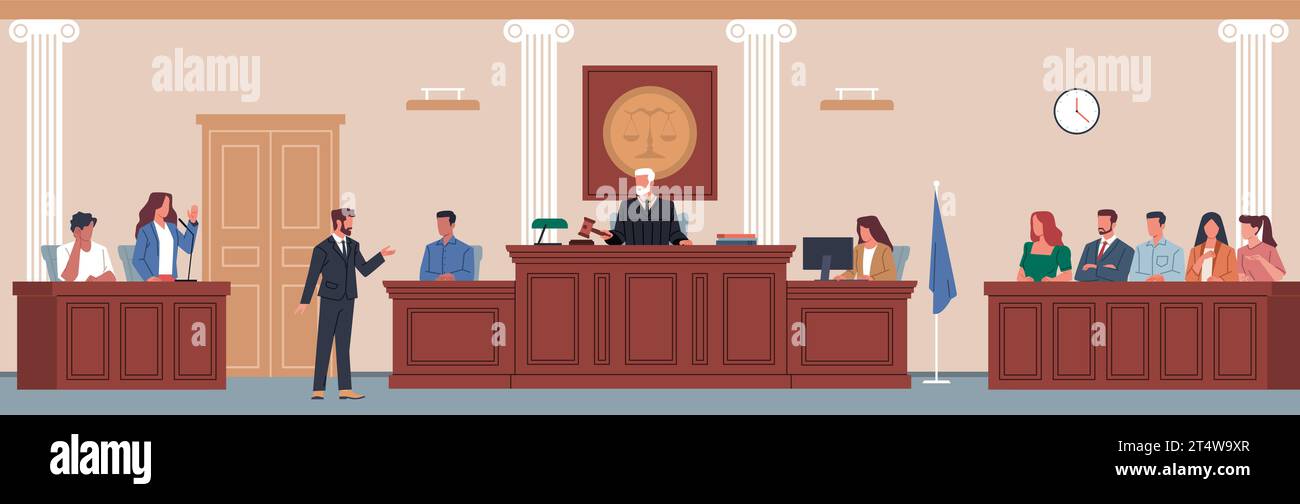Exactly How Trial Presentations Enhance Your Debate and Convince Jurors
Trial discussions function as a crucial mechanism for boosting legal disagreements and persuading jurors. By incorporating visual help, narrative frameworks, and emotional involvement, lawyers can develop an engaging situation that reverberates on multiple levels. The strategic use of visuals not only clarifies complex information but likewise catches jurors' attention a lot more efficiently than words alone. However, the art of storytelling plays a just as crucial function in transforming valid evidence into a compelling narrative, forming jurors' assumptions - trial presentations. Recognizing these aspects can dramatically affect test end results, raising the inquiry of exactly how each component adds to this detailed dynamic.

Relevance of Visual Help
Aesthetic aids play a vital duty in improving the performance of test discussions, as they can considerably enhance audience engagement and retention of info. In the context of a trial, where jurors are entrusted with handling facility details, visual help offer to simplify and clarify bottom lines. Charts, charts, and photos can communicate data and ideas that might otherwise overwhelm or confuse jurors, enabling a much more straightforward understanding of the proof presented.
Furthermore, visual aids aid in maintaining juror focus throughout the proceedings. By breaking the dullness of verbal testimony, these devices can stress important arguments, making them much more memorable. Reliable aesthetic help can also evoke emotional reactions, which can be crucial in convincing jurors to straighten with the speaker's narrative.

Crafting Engaging Stories
A compelling narrative is important in test presentations, as it works as the foundation of efficient persuasion. It permits attorneys to weave with each other realities, proof, and psychological elements right into a meaningful story that resonates with jurors. This narrative framework makes it possible for jurors to recognize the complexities of the case while guiding them via the lawyer's disagreement.
To craft a compelling narrative, lawyers need to focus on quality and comprehensibility. Additionally, the use of vibrant descriptions can create psychological images that assist jurors picture the events, making the narrative extra remarkable.
Furthermore, integrating vital styles throughout the presentation find out reinforces the core message and aids in retention - trial presentations. The narrative needs to not only convey details but likewise stimulate a feeling of justice, highlighting the stakes entailed. Ultimately, a sound narrative cultivates a link between the jurors and the instance, placing the lawyer's argument as both qualified and compelling, therefore enhancing the likelihood of a positive decision

Involving the Court Mentally
Effective jury engagement hinges on the lawyer's ability to connect with jurors on a psychological level. This connection can substantially impact jurors' perceptions and their utmost decision-making.
Aesthetic help, such websites as photographs or videos, can additionally enhance psychological involvement, supplying jurors with dazzling depictions of the situation's human aspects. Crafting a narrative that highlights the battles and victories of the individuals included guarantees that jurors see past the lawful debates and recognize the human repercussions of their decisions.
Additionally, tone and body movement play an essential role in sharing emotion. An attorney's passionate distribution can resonate with jurors, reinforcing their emotional financial investment in the event. It's important to stabilize sob stories with accurate evidence, making certain that jurors feel forced to act while remaining based in the reality. Ultimately, a mentally engaged court is much more likely to be convinced, making emotional link an important element of efficient test discussions.
Structuring Your Discussion

The pop over to these guys body of the discussion ought to be logically segmented into key factors, each supported by engaging evidence. It is helpful to utilize narration techniques to weave facts into a narrative that jurors can easily adhere to. Visual aids, such as graphes and videos, can boost comprehension and engagement, helping to highlight important pieces of proof.
Real-World Study
Taking a look at real-world situation research studies gives indispensable understandings right into the art of trial presentations and persuasion. The protection team properly utilized a method that combined prominent expert testimonies with multimedia discussions, which astounded jurors and inevitably affected their decision.
An additional remarkable instance is the "McDonald's Coffee Instance," where the complainant's attorneys used graphic photos of the injuries received by Stella Liebeck. trial presentations. This raw visual evidence played a critical duty in communicating the severity of her burns, leading to a considerable jury award. Such cases show that impactful test presentations commonly pivot on the effective combination of visuals and storytelling to evoke emotional actions from jurors
Additionally, the "Casey Anthony Test" highlighted the significance of narrative coherence and reputation. The prosecution's failing to establish an engaging timeline lessened their persuasive power, highlighting the requirement of a well-structured discussion. Evaluating these situations discloses that successful test discussions require calculated preparation, emotional interaction, and the capability to resonate with jurors' values and beliefs.
Final Thought
Test discussions dramatically improve disagreements and encourage jurors with the critical usage of aesthetic help, engaging stories, and psychological engagement. By streamlining complex info and promoting connections with the audience, these aspects produce a memorable and impactful experience. A well-structured discussion balances emotional allures with accurate evidence, eventually reverberating with jurors' worths. The combination of these methods not only influences decision-making but additionally highlights the value of reliable interaction in the court.